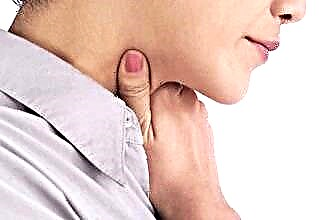Otitis media is an ENT disease in which the labyrinth, middle or outer ear becomes inflamed. The severity of the symptomatic picture is determined by the virulence of the pathogens that caused the inflammation, as well as the resistance of the organism. Ear pathology is much more common in children, which is associated with the structural features of the Eustachian tube and low reactivity of the body.
According to statistics, more than 30% of all ENT diseases are caused by ear inflammation. At the age of 5 years, almost every child suffers acute otitis media, which often occurs against the background of the development of a common infection. Any inflammatory processes in the ear can provoke the development of more serious complications, which include meningitis, brain abscess, hydroencephalitis, hearing loss, autophony, etc.
Disease types

What is otitis media? Ear pathology is characterized by catarrhal processes in the mucous membranes of the organ of hearing and the external auricle. Depending on the location of the lesions, the following types of ENT otitis media are distinguished:
- external - foci of inflammation arising in the external auditory canal, auricle and membrane;
- middle - inflammation in the Eustachian tube, ear cavity and cellular process behind the auricle (mastoid process);
- internal (labyrinthitis) - damage to the cochlea and semicircular canals, which are part of the hearing aid, i.e. ear labyrinth.
Most often, children and adults are diagnosed with otitis media. This is associated with an increased risk of pathogens entering the tympanic cavity through the Eustachian tube connecting the middle ear and nasopharynx.
Depending on the intensity of ear inflammation and the rate of development of pathological processes, ear pathology is divided into two types:
- acute - characterized by a pronounced severity of local and general symptoms of the disease, which develop over several days;
- chronic - accompanied by sluggish inflammatory reactions in the ear, which can last for several years.
Infection routes
Is otitis media an infectious disease? In 85% of cases, ear pathology occurs as a result of damage to the mucous membranes of the ear by the pathogenic flora. Much less often, the disease occurs on its own due to dysfunction of the Eustachian tube, trauma, congenital abnormalities, etc. Catarrhal provocateurs processes are nonspecific pathogens such as Pseudomonas aeruginosa, meningococci, streptococci, Proteus, Haemophilus influenzae, staphylococci, etc.
processes are nonspecific pathogens such as Pseudomonas aeruginosa, meningococci, streptococci, Proteus, Haemophilus influenzae, staphylococci, etc.
As a rule, ear inflammation occurs as a complication of infections affecting the mucous membranes of the upper respiratory tract: tonsillitis, pharyngitis, rhinitis, laryngitis. The main ways of penetration of pathogenic flora into the ear cavity are:
- tubogenic - the penetration of pathogens into the organ of hearing through the Eustachian tube, the mouth of which is located in the nasopharynx;
- hematogenous - the spread of infection with the blood stream, due to which pathogenic agents penetrate into the ear, forming foci of inflammation there;
- meningogenic - infection of the inner or middle ear caused by the penetration of pathogens into the ear mucosa from the skull.
In 25% of cases, infection occurs as a result of a traumatic lesion of the tympanic membrane, which is one of the key barriers to the entry of pathogens into the middle ear.
Experts do not recommend independently cleaning the external auditory canal from sulfuric secretion, which has bactericidal properties and prevents infection of the hearing organ.
Etiology of the disease
Otitis media - what is it? Ear pathology is inflammation in the skin and mucous membranes of the organ of hearing. Its development is fraught with formidable complications, therefore, if alarming symptoms appear, a visit to the otolaryngologist cannot be postponed.
The disease occurs as a result of a decrease in the body's resistance, which creates suitable conditions for the development of pathogens in the ear. The main reasons for the appearance of catarrhal processes include:
- viral and bacterial infections;

- vitamin deficiency and lack of trace elements;
- endocrine disorders;
- malfunctions of immunity;
- dysfunction of the digestive tract;
- sudden pressure drops;
- intracranial injury;
- pathology of the nose and ear.
According to the observations of specialists, inflammation in the ear at 3 is more common in children under the age of 12. This is due to the reduced reactivity of the immune system and the structural features of the organ of hearing. The eustachian tube in infants is much wider and shorter than in adults. This increases the risk of tubular spread of the infection into the ear cavity several times. In addition, the mucous membrane of the middle and inner ear in children is loose and therefore more susceptible to the penetration of pathogens.
Due to the increased strength of the tympanic membrane in children, with the development of purulent or exudative otitis media, its perforation and, accordingly, the evacuation of liquid contents is not observed. This increases the risk of developing labyrinthitis as a result of the spread of exudate into the ear.
Clinical picture
The main sign of the development of ENT disease is ear congestion and pain. How does the ear hurt with otitis media in adults? The severity of symptoms depends on the type of disease and the characteristics of the course of catarrhal or purulent processes. With the development of acute inflammation, the following clinical manifestations are observed:
- aching or shooting ear pain;
- noticeable hearing loss;
- noises and crackling in the ears;
- serous or purulent discharge;
- dizziness;
- hyperthermia;
- loss of appetite;
- general malaise.
Sluggish otitis media in adults is accompanied by less vivid clinical manifestations. Chronic inflammation, as a rule, is caused by untimely or ineffective treatment of an acute form of ENT disease. How long does otitis media last? In the absence of therapy, pathological processes in the tissues can last for years.
The development of chronic pathology is signaled by the following symptoms:
- even greater hearing loss;
- mild pain in the ear and temporal bone;
- a feeling of congestion in the ears;
- incessant ringing in the ear;
- discharge of purulent exudate.
Chronic tissue inflammation leads to their degradation, which affects the functioning of the components of the auditory analyzer. Irreversible processes are fraught with the development of partial or complete deafness.
Otitis externa
The key cause of otitis externa is microbial or viral pathogens that invade the external auditory canal, auricle or eardrum. The causative agents of infectious otitis media can be staphylococci, Pseudomonas aeruginosa, aspergillus, influenza virus, etc. Untimely therapy of pathology leads to the development of complications such as otitis media, mumps and furunculosis.
Depending on the localization of the lesions, otitis externa in adults is divided into several types:
- limited - damage to a small area of the skin of the external auditory canal, on which a furuncle subsequently develops;
- perichondritis - inflammation in the skin and cartilage tissue of the auricle;
- diffuse otitis media - a common inflammation that affects all major parts of the outer ear;
- otomycosis is a fungal infection of the auditory canal and auricle, characterized by the appearance of eczematous eruptions.
At the advanced stages of the development of pathology, the parotid salivary glands are affected, as a result of which the patient experiences abundant salivation.
Otitis media
Otitis media - what is it? Otolaryngological disease is characterized by damage to the mucous membrane of the ear cavity, the Eustachian tube and the cells of the mastoid process. General infectious lesions of the nasopharynx play a key role in the development of pathology, from where pathogens enter the middle ear through the Eustachian tube.
In addition to the main types of ENT diseases, there are several subspecies of otitis media:
- bullous - a post-influenza complication in which hemorrhagic vesicles (bulls) form on the mucous membrane of the tympanic cavity. Spontaneous opening of the vesicles leads to the appearance of bloody discharge from the auditory canal;
- allergic - edema of the mucous membrane of the Eustachian tube and ear cavity, caused by an allergic reaction of the body to the action of medications, metabolites of pathogens, food, etc.;
- adhesive - the formation of adhesions on the surface of the auditory ossicles and the ear cavity, which is due to the mineralization of fibrin filaments.
- exudative - non-infectious inflammation caused by the accumulation of liquid secretions in the ear cavity. Transudate is often sterile, but due to a decrease in the reactivity of the body, it can turn into purulent discharge;
- purulent - severe inflammation of the middle ear resulting from bacterial or fungal tissue damage.
The most severe forms of pathologists are considered to be purulent and adhesive otitis media. Their progression disrupts tissue trophism, resulting in the development of irreversible hearing loss. With the generalization of purulent processes, the risk of otogenic sepsis increases.
Otitis media without pain
Can ear not hurt with otitis media? The exudative form of pathology is characterized by the practical absence of pain syndrome and associated local manifestations. This is due to the absence of inflammatory processes in the tissues that would provoke irritation of pain receptors.
In 80% of cases, painless otitis media occurs as a result of the development of tubo-otitis, which is an inflammation of the Eustachian tube. Swelling of the tissues leads to blockage of the ear canal, as a result of which the drainage of the ear cavity is impaired. A low vacuum is created in it, which stimulates the production of sterile secretions by the glands.
Otitis media without ear pain is very difficult to diagnose, and this is its insidiousness. The development of pathology can be signaled by ear congestion, increasing hearing loss and autophony. The disease can be eliminated by increasing the inner diameter of the Eustachian tube, which would lead to the restoration of its drainage function.
Duration of illness
How long does otitis media last in adults? The period of inflammatory processes in the organ of hearing directly depends on the type of pathology. If a person's ear is inflamed, which caused the appearance of a boil, the inflammation will continue until the boil opens. This can take anywhere from 4 days to 1.5 weeks.
Many patients ask themselves the question: "How many days does otitis media go away?" In the case of uncomplicated inflammation, otitis media goes through several stages of development: initial, pre-perforative, perforated and reparative. In the absence of purulent processes and special treatment, inflammation regresses within 7-10 days.
Infectious pathology rarely goes away on its own without appropriate drug treatment. Ignoring the problem leads to the transition of acute inflammation to a sluggish form.
How quickly does otitis media go away with adequate treatment? In the case of the development of a catarrhal form of ENT disease, inflammatory processes completely disappear within 5 days. How long does otitis media with purulent discharge last?
Timely passage of antibiotic therapy guarantees the elimination of clinical manifestations of the disease within 7 days.
Conclusion
Otitis media is an ear disease that provokes serious complications and consequences. Depending on the cause, the disease can be infectious or non-infectious. As a rule, ear pathology develops as a complication of common infectious diseases such as tonsillitis, pharyngitis, tonsillitis, scarlet fever, measles, etc.
The key symptoms of the disease are ear congestion, hearing loss, and shooting pains. However, there are forms of ENT disease that are not accompanied by pain, which can delay diagnosis and, consequently, treatment. Untimely therapy can lead to complications, which include mastoiditis, hearing loss, autophony, meningitis, sepsis.




